Wood Slabs for the World: Urban Wood for a Sustainable Future
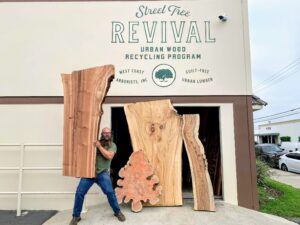 As we all know, climate change is a serious issue and there isn’t just one solution to combat it. There are many beautiful ways that folks are trying to clean our ocean, land, and air. We’ve focused on urban lumber and slabs as a way to reduce carbon emissions and create a sustainable future. Utilizing urban wood for lumber, a resource that has historically been discarded, can help sequester carbon in long-lasting wooden furniture, architecture, and goods. By using urban slabs, you’re contributing to the fight against global warming.
As we all know, climate change is a serious issue and there isn’t just one solution to combat it. There are many beautiful ways that folks are trying to clean our ocean, land, and air. We’ve focused on urban lumber and slabs as a way to reduce carbon emissions and create a sustainable future. Utilizing urban wood for lumber, a resource that has historically been discarded, can help sequester carbon in long-lasting wooden furniture, architecture, and goods. By using urban slabs, you’re contributing to the fight against global warming.
What is an Urban Forest?
Urban Forests are the collection of trees and other vegetation growing in and around urban communities! It’s not always easy to see these trees as you would a traditional forest, but over 141 million acres of America’s forests are located in our cities. Pretty powerful stuff! From environmental to social impact, urban trees provide an abundance of benefits.
The California Urban Forest Council explains the following benefits of trees:
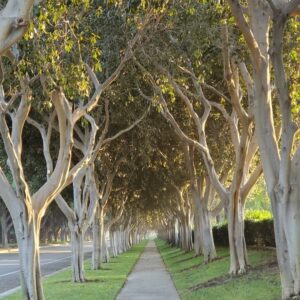
Trees have an Impact on Our Health
- Help us breathe easy, producing the oxygen we breathe and cleaning our air
- Reduce anger, aggressiveness, and stress
- Reduce mental fatigue and help us concentrate
- Reduce noise pollution
- Patients in hospital rooms with views of trees heal more quickly
- Streets lined with trees are proven to be safer
Trees have an Economic Impact
- Urban forest canopies cool our cities and reduce energy use. Households can save on cooling costs in summer and heating costs in winter
- Reduce the need for more power stations
- Extend the life of our streets
- Remove pollutants from the air and sequester carbon, providing value for cities
- Increase property value
- Known to increase sales in retail areas
Trees Have an Environmental Impact
- Help to combat climate change via carbon sequestration and reducing carbon dioxide emissions
- Clean our air
- Provide habitat for wildlife
What is Urban Wood?
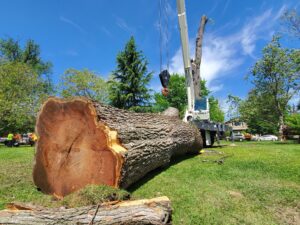
Urban wood is one of the newest forms of sustainable building material. It’s a locally sourced, environmentally friendly product that can be used as an alternative to traditional forested lumber. Some people don’t realize that urban wood slabs come from trees that are removed for other reasons than their timber value. Some of the reasons for removal are disease, storm damage, or fire prevention. Whether it’s a wood slab, a guitar, or as building material, urban wood makes a big impact. Most people see these trees as green waste; we see them as a possibility for the future!
Carbon Sequestration Opportunity
Urban trees in the US hold about 774 million tons of carbon. As you likely know, there is currently a real movement focused on planting more trees. Everyone from Elon Musk, to YouTube Influencers and others are donating money towards planting efforts; it’s fantastic! But more trees being planted in the urban forest, means more trees that will eventually need to be removed. Over 124 million tons of carbon could be sequestered nationally, from urban hardwood over the next 30 years. That is, if we get it together as a network of producers and get good at saving all the logs we can in volume. Volume is the key for making a big environmental impact via Carbon Sequestration.
One of the most beautiful gifts that trees give us is that they take cO2 out of the air. If the trees are turned into firewood or mulch, the carbon is released back into the atmosphere. How can urban wood slabs help to sequester carbon? Well, 4.7 pounds of carbon can be sequestered per board foot of lumber. We need to be forward-thinking and find good ways to use this resource as furniture, flooring, architectural millwork, and more. It may even surprise you to know that urban lumber is valued greater than forest grade because of its history, unusual figure, and personal meaning to the community.
Keep reading and you will learn how we process the wood at our lumber yard, and how this sustainable resource can be used.
First, a little bit about our parent company West Coast Arborists, Inc (WCA). We are a municipal tree-trimming contractor and we serve communities who care about trees. This includes about 330 cities and public agencies throughout California and Arizona.
25 years ago, WCA started an urban wood recycling program in collaboration with the California Department of Forestry and Fire Protection(CDF) also known as CalFire. Since a number of trees living within our city streets and parks eventually decline and require removal, it became imperative to identify ways to salvage what we could.
Today this Urban Lumber Recycling program is known as Street Tree Revival.
Recycling urban lumber is a great opportunity to carry on the legacy of the tree! 95% of the time, our program operates on pure salvage; we save the logs we can that come into our sort yards post removal. However, sometimes forward thinking allows us to save specific trees to return to the tree owners.
An example of this was the removal of a historic Engelmann Oak at Caltech University. The tree was thought to be the oldest Engelmann Oak in the known universe.
Read More about the Englemann Oak Here
“Based on estimates of its age, it is likely the tree had stood sentinel—on land first inhabited by the Tongva, then claimed by the Spanish and later becoming part of the United States—for three centuries before sharing its space with Caltech. When Caltech trustee Arthur Fleming gave the original 22-acre tract to the Institute in 1908, the Engelmann oak stood almost at the exact center of the plot, and it would soon stand just west of the first building constructed on campus: Pasadena Hall, later renamed Throop Hall. The oak survived longer than the building, which was demolished after suffering damage in the 1971 San Fernando quake.”
This tree lived a long, meaningful life, and we were honored to preserve its beauty when it finally had to be removed due to extensive decline. After removal, the university was able to send pieces to Arizona State University for dendrochronology studies to find out how old it was. We were also able to serve the community by saving a large piece that was used to create a communal table at a campus coffee shop. Instead of this unique wood species going to waste, we were able to capture the carbon on this project and preserve a little piece of history for people to enjoy for years to come.
Urban Forest in California and Arizona
Throughout California and Arizona, we have a biodiverse urban forest and, more and more, we’re planting wild and different species in the area. The average city has 150 different species! In some cities, like San Diego, where we have the wild animal park, you’ll find 800 tree species.
Urban Lumber Species Examples:
You may be surprised to see the variety of wood species that grow locally. We’ve listed several examples below. You can find information about wood slabs and logs for sale at our showrooms in Anaheim and Stockton. These are perfect for your wood products, projects, and furniture.
Alder
Ash
Black Acacia
Blue Gum Eucalyptus
Camphor
Carob
Carolina Cherry
Chinese Elm
Chinese Pistache
Coast Live Oak
Cork Oak
Cottonwood
Cypress
Deodar Cedar
Elm
Ficus
Holly Oak
Honey Locust
Incense Cedar
Indian Rosewood
Ironbark Eucalyptus
Jacaranda
Juniper
Liquidambar
Magnolia
Melaleuca
Mulberry
Pear
Pecan
Pepper
Pine
Podocarpus
Red Gum Eucalyptus
Redwood
Sheoak
Silk Oak
Silver Maple
Sycamore
Tulip
Valley Oak
Walnut
White Poplar
Zelkova
- Coast Live Oak
- Carob
- Cork Oak
- Redwood
- Silver Maple
- Sycamore
Who Is The Urban Lumber Team At Street Tree Revival?
So glad you asked! We have 13 dedicated team members and 5 locations.
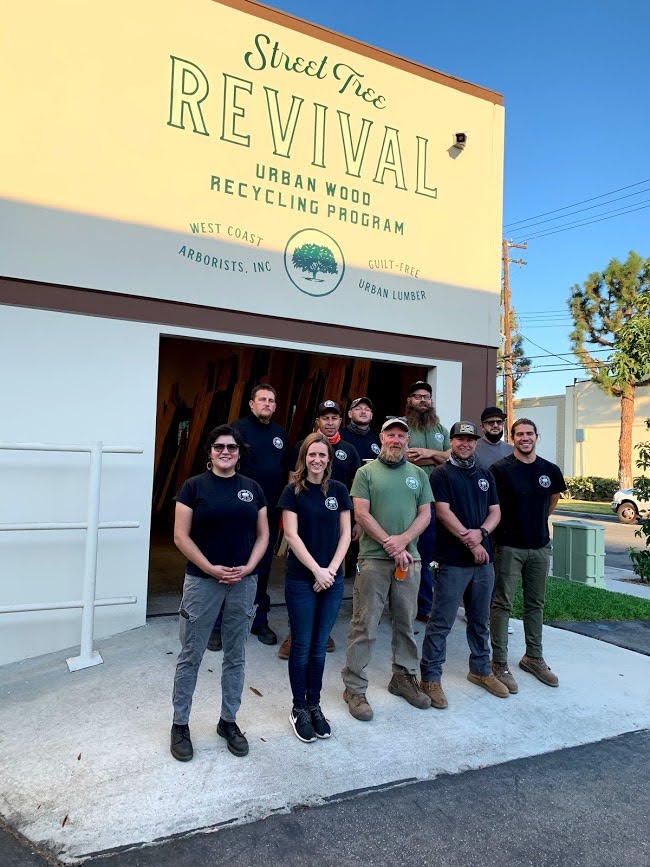
Street Tree Revival Anaheim
2220 E. Via Burton St.
Anaheim, CA 92806
- Lumber Showroom
- Vacuum Kiln
- Custom Wood Wizz Planing
- Engraving Services
Street Tree Revival Placentia
- Kiln Drying
- Lumber Storage
- Woodshop
- Nursery
West Coast Arborists, Inc. Ontario
- Log Sort Yard
- Woodmizer and Lucas Mill Sawmill
- Custom Milling Services
- Lumber Air Drying
Street Tree Revival Stockton
3625 E. Stevenson Avenue
Stockton, CA 95205
- Lumber Showroom
- Vacuum Kiln
- Woodmizer Sawmill
- Custom Milling Services
West Coast Arborists, Inc. French Camp
- Log Sort Yard
You may wonder how we keep track of all our material! Well, every good program has a process. Let’s walk through ours!
Logs to Lumber Process
Removing Trees
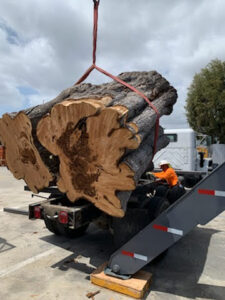
While our parent company WCA primarily focuses on maintaining trees, our story usually begins with a removal. Why are trees removed? There are many reasons trees are removed but some include storm damage, fire, drought, pests/disease, or infrastructure damage. It could also be that the tree has just reached the end of it’s natural life!
WCA has created an in-house inventory system, called ArborAccess, to help our customers manage their urban forests. Through this GPS program, it’s possible to look at the entire landscape of each city as a whole, or drill down into specific tree data. This data includes tree GPS location and Google Earth photo links, maintenance records, and plant health care recommendations. When trees become sick or reach the end of their life for some reason, our customers can flag them for removal in this system.
Replanting Trees
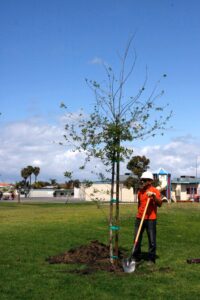
Planting trees is a huge priority for our company! We have a grant department working to find opportunities to assist our public agency partners to secure planting grants so that they can make an impact on their communities through the power of trees. We have a nursery where we grow and care for trees too!
Tracking Logs
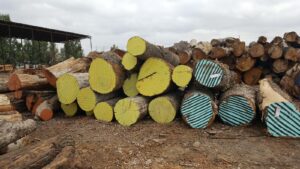
We track our material in a few different ways throughout while processing from logs to lumber.
As mentioned before, one thing that really makes our municipal tree care services stand out is that we have a GPS inventory system for our customers to review their living trees. When a tree is flagged for removal, we receive a notification through our Street Tree Revival program. We can then provide an assessment of the tree’s condition and decide if the logs will be usable as lumber. If it is usable, we can ask crews to tag it with tree site information and transport it to one of our storage yards.
Being able to look at tree decline and removal data company-wide also gives us the ability to track any trends in urban forest health on local, and regional levels. This helps us to better plan ahead both for planting and potential removals.
For example, Redwoods are sometimes removed because many cities have switched to reclaimed water which is high in salt. This in combination with California’s drought conditions has added extra stress on the health of these big beautiful trees.
Shamel Ash is sometimes removed because the trees are so huge and powerful, they have been known to overgrow the sidewalk or even take out pipes.
Dutch Elm Disease and the Shot Hole Borer are examples of outside forces that put the tree into a state of dis-ease. Sycamore and Elm trees are sometimes removed in an effort to stop the spread of this vascular wilt disease and bugs that bore their way into the trunk.
We do everything we can to keep these trees healthy and living a long life, but as you can see, sometimes the only option is removal.
Once a tree is removed, it’s no longer tracked in our WCA program, so we needed another way to track material. We started utilizing Lumber Tracker inventory management in 2019 and it’s been a great tool for us. Once the log is processed into a lumber product, we can add it to our inventory and track it through the drying process. Each piece receives a unique inventory ID with photos, pricing, and any other information we might have about the tree. Once it’s dry, we can post it to our website for sale.
Sounds cool right?
There is obviously an added cost for this processing, in terms of team members, equipment, material transportation, and real estate for the storage. (One slab can take 3 years to dry, so it’s definitely a commitment.) We believe this commitment is worth it when we see the lasting effect this is having on our communities and the whole world.
Repurposing Urban Wood
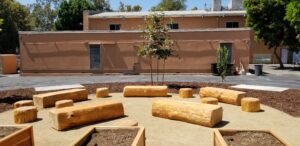
The majority of the logs that enter our yard haven’t been pre-flagged and tagged for our program. They are coming straight from removal sites in all shapes and sizes. Once a log arrives at our yards, it’s necessary for one of our experts to evaluate its condition and determine which recycling program it should enter. Logs can go to our Street Tree Revival program, our Woodhill Firewood division, or be recycled into mulch/top soil. We also send some material to be ground into playground chips and freeway weed abatement! We are also actively seeking other higher potential opportunities for this wood, like biochar and textiles.
Milling for a Sustainable Future
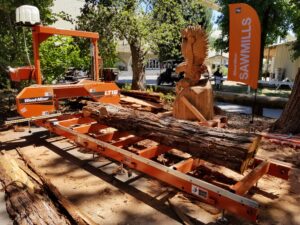
When a log is sent to our Street Tree Revival program, our very first step is to cut and seal the ends with wax to prevent uneven drying. The logs are then curated into different categories. Full logs are available for purchase. If we mill, it’s either for custom orders or for our standard range of wood products and wood projects. We also offer custom milling to the public because we recognize one major obstacle that causes many trees to go wasted is that land owners aren’t able to mill and effectively utilize their own wood.
Urban logs grow differently than trees in a traditional forest. Their growth patterns are heavily impacted by their environment – access to water, light, space, and maintenance all play a role in how the tree grows. For this reason, we often battle twists, voids, and decay while still trying to find the usable parts of the log. We have a lot to learn from these trees since sometimes these “defects” make for the most beautiful character.
Our Machinery:
Woodmizer LT70
Woodmizer LT40
WoodMizer WM1000
Lucas Mill
Which machine we use depends on how we are processing the logs and what the final product will be. Having a variety of equipment to tackle a variety of log sizes is essential.
Drying Wood Takes Patience and Persistence
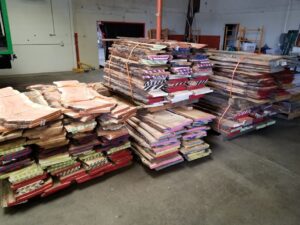
Once the wood is milled, we store the wood in one of our drying structures out of the sun and elements. We baby the material to make sure our end product is stable for our customers. We stack material on small wood pieces that allow for airflow between layers called “stickers.” Having even stickers is oh so important. We like to say, “perfect stickers make perfect lumber.” The amount of four by fours and stickers that we cut every two months is mind boggling, because each stack uses 150 stickers. It’s really important in order to keep your lumber straight. On average, it takes an inch per year of thickness to dry wood.
When producing urban wood slabs, they really does take a long time to dry. Because of this, you need to set high standards from the beginning of the process and really commit to them throughout the journey from log to lumber. This patience and persistence will ensure you have a product you can stand behind. We set high standards for ourselves and then put our blinders on so we don’t rush the process.
In addition to air drying, we also take advantage of our two Dehumidification Kilns and our Vacuum Kiln. The vacuum kiln is our true star which can quicken the drying cycle to just 2 weeks. It holds about 4,000 board feet and each load produces about 14,000 pounds of stored carbon! It uses vacuum pressure to lower the boiling point of water. It sucks all the air out of the chamber so the environment acts as if it’s at 160,000 feet of elevation where water boils at 100 degrees. Hot water goes through aluminum plates between each layer of lumber. Since there’s no air flow, the wood dries from the inside out. There’s also a bladder that goes on top of the stack. When the chamber pressure stops, the air in the bladder expands with the pressure and it pushes off of the roof and keeps the unit flat.
We are so proud of our team and the expertise they’ve developed over the years in order to put this powerful tool to work.
Prepping Wood Slabs for Sale
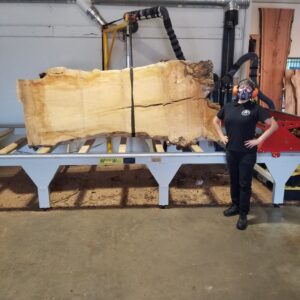
Our investment in a Wood Wizz, also made a huge difference in our ability to market our wood slabs. Having a raw product that needs less work to make into a finished piece lowered the entry point for our customers. What once felt like a job that took a specialized skill and hard to find equipment, is now a lot easier!
We love seeing the look on the faces of first-time woodworkers when they visit our showroom and see what is possible and actually feels DOABLE. So many of our customers are starting a new passion that they’ll continue for years to come.
Our Goals Sustainable Lumber for the Future
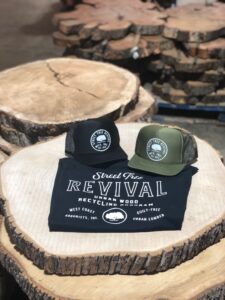 The future of wood is bright. This material has been used for thousands of years, and it’s not going anywhere soon. We have seen the use of this natural resource increase over time as we continue to innovate with new technologies that allow us to create more and waste less.
The future of wood is bright. This material has been used for thousands of years, and it’s not going anywhere soon. We have seen the use of this natural resource increase over time as we continue to innovate with new technologies that allow us to create more and waste less.
We know the future of wood is a topic that many people are interested in. So you may be asking, what’s next? We plan to discover more usable woods, plant for the future, and increase awareness and education.
If you’d like to join us on this journey, please check out this post where we dig deeper into the future of urban wood, or contact us for more information.

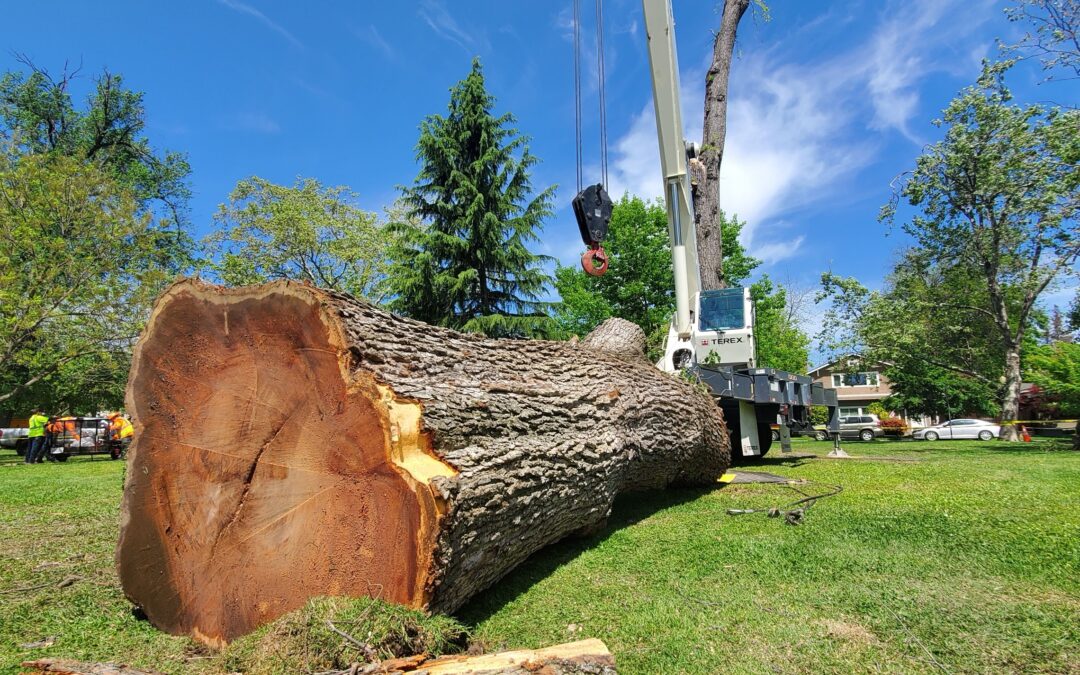
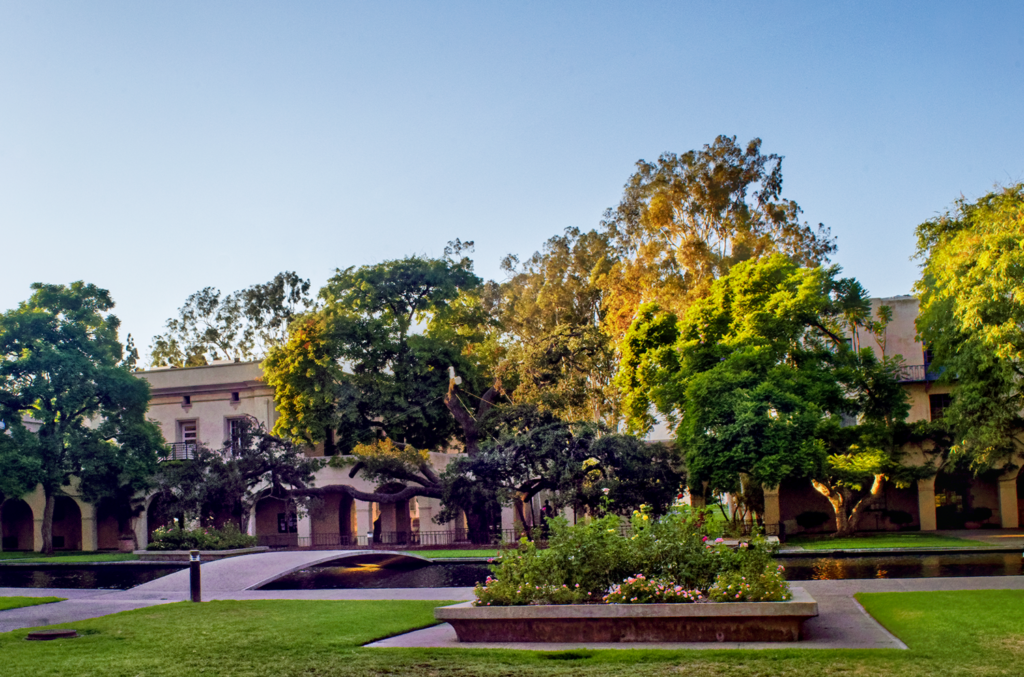
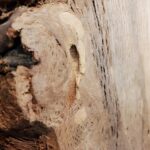
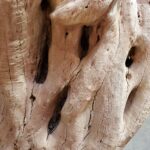
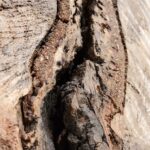
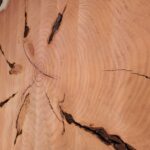
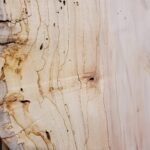
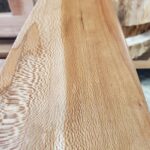
Recent Comments